Search

Publications
Acting together against common challenges and threats. For the upcoming visit of President Putin to China

Global stand-off lines
The state visit of Vladimir Putin, the President of the Russian Federation, to China on 16-17 May 2024, the forthcoming negotiations with Xi Jinping, the President of the PeopleТs Republic of China, as well as the particular features of the current international situation provide for the possibility of highlighting a series of the key problems and additional opportunities in the interaction between Russia and China, articulating the key priorities for improving the efficiency of such interaction, as well as reviewing the recommendations for the short-term perspective.
In the environment of unprecedented advancing of escalation engineered and heated by collective West, of the Special Military Operation entering its critical phase, the role of Russia and China in the developed geopolitical setup is acquiring additional meaning and acuteness. The specifics of the situation is associated with the objective increase in the value of Russian state for China Ц not only as a guarantor of security in Eurasia («back-to-back»), but also as an important element of the multi-polar world currently being structured by China taking a stand against the American world and being based on the ideas of «Community of Common Destiny». Collapse of Russia will mean the break-up of the global system that China is building, PRC turning into the next main target of expansion and annihilation for the United States and their satellites.
Such scenario may be prevented only by way of the radical modernization of the key mechanisms of Russian-Chinese strategic partnership and trust-based interaction. Considering the high dynamics of growing trade and economic relations (USD 240 bn), as well as tightening the secondary sanctions imposed by the West against Chinese and Russian banks, companies and other entities/individuals, it makes sense to review the possibility of non-disclosing the reporting data on certain trading options, bills of goods, customs statistics, etc.
Administrative, legal and foreign policy mechanisms should be used for better protecting Chinese participants of trading and economic transactions with the Russian Federation and third countries against western sanctions. Another necessary measure is debottlenecking banking payments, cross-border supplies, expanding motor transport, railway and marine ports «windows», strengthening the protection of mutual investment.
Security and military contacts
In the global vision of Moscow and Beijing the multi-polarity is playing the key role as the common objective and the process of forming the world order, which will present and alternative to the American one. At the same time the ways to form multi-polarity will be associated with more and more conflicts every year and will become more and more unpredictable in comparison with the bi-polarity, which has now been filed as a history. One can survive in the environment of the increased multivariance in confrontation with the US, uncertainty and unpredictability of other centers of power only by qualitative deepening of Russian-Chinese strategic cooperation, coordinating the common vision of their objectives in the world and in certain regions.
The strategic value of Russia for China is not only in the current deterrence of the collective West in Ukraine, i.e., at the provisional «front line» of confrontation, but also in the possibility for further development and the existence of Chinese state and civilization by maintaining and strengthening of strategic military potential of the Russian Federation and by qualitative restructuring of Russian-Chinese military and technical contacts. It is obvious that it concerns not just about mechanical summing up of military capabilities of both countries, but about enhancing the mechanism of military and technical cooperation.
In 2020, the Road map was signed for Russian-Chinese military cooperation for the period 2021-2025. At the same time the parties understanding that the sphere of strategic defence is one of the most sensitive and important ones may review further structural expansion and update of military and technical cooperation.
It is known that in 1990-2000s Russia was almost fully covering the military and technical needs of China. Now the situation is different, and it is Russia who is in need of such assistance including more supplies of components, electronics, radar and navigation equipment, certain components of unmanned aviation vehicles, share of satellite monitoring data and other products of Russian-Chinese technological and space cooperation.
Central Asia and Southern Caucasus
In the overall list of the most important regions of the world, Moscow and Beijing based on their own security priorities should highlight the following:
- Central Asia and Southern Caucasus;
- East Asia including adjacent Pacific marine zones.
The challenges for the RF and the PRC pertaining to Central Asia are currently focused on dramatic growth of the activity of the West in Armenian, Kazakhstan and Kyrgyzstan areas including intelligence preparation and penetration (influence agents), launching the color revolutions mechanism, disconnecting the countries of the region from SCO, CSTO, EAEU, from One Belt, One Road initiative, re-formatting this part of Eurasia into the zone of the Anglo-Saxon world hostile to their neighbors Ц Russia and China.
Obviously, in such environment, the tactical mis-coordination between Moscow and Beijing during implementing their own transportation, hydrocarbon, investment, trading and economic projects in the region should be moved out of the picture. The key agenda for the RF and China includes close political coordination in Central Asia, development of a comprehensive plan for counteracting activities of the collective West, cooperation in such spheres as natural resources, economy, transportation and logistics.
Step-by-step coordinated displacement of the US, France, the UK and other western powers from Central Asia and Southern Caucasus is required. Otherwise, Moscow and Beijing may get a «second front» in the rear and gradual destruction of Russian and Chinese positions by the West.
One of the key focus areas remains cooperation in law enforcement and counter-terrorism activities of Shanghai Cooperation Organization, its rapprochement with CSTO. Transformation of the Shanghai format is long overdue; after Iran joined SCO as the ninth permanent member and in the context of the pending integration of Belarus, the Organization will become more and more consolidated every year, more and more capable to standoff the expansion of the West. Establishment of the full-time headquarters of the representatives of the Defence Ministries of the SCO member states, increase in the number of different joint military and technical actions with CSTO would allow for improving the SCO security element without changing its status as a non-aligned and non-military organization.
East Asia
The East-Asian community is developing in the environment of fast diversification of AUKUS Ц the anti-Chinese military and political union of Great Britain and Australia —Ўј, which was initially conceived in 2021 as a project of creating nuclear submarines fleet within the Australian Navy. Then the project quickly developed to a full-featured alliance with the relevant military and political agenda and NATOТs philosophy projected on Asia.
Currently Washington is pulling South Korea and Japan to AUKUS, enhancing bilateral military contacts with the Philippines and organizing regular military exercises in the disputed territory of the South China Sea and other areas of the Pacific Ocean. In fact, a unified anti-Chinese front has developed in the Asian-Pacific Region (APR) comprising the USA, South Korea, Japan, Australia, the Philippines and New Zealand. In addition to the traditional American-Japanese military exercises, the first German-Japanese maneuvers are planned in the regions; they are justified by the «growing Chinese threat».
In this environment, the navy element becomes the key component of the Chinese strategic triad; the need arises for developing tactical scenarios with participation of the Navy of the China PeopleТs Liberation Army (PLA) and of the Russian Federation against the enemyТs navies, mainly of the USA, who is preparing for a full-fledged standoff with China in the Pacific. The Chinese Navy is already outbalancing the US Navy in numerical ratio, and Pentagon is developing new concepts of neutralizing China PLA Navy, in particular, the Replicator Program stipulating the use of several thousand unmanned surface vehicles controlled by Artificial Intellect. Washington is planning that this Program will help to mitigate the quantitative metrics of the Chinese naval power. This is a serious challenge for Beijing, and it will hardly do without enhancing the format of military cooperation with Russia.
Russian-Chinese strategic interaction should be brought to a higher level: the countries need to switch from periodical joint air alert missions of strategic bombers in the APR to testing various enhanced formats of joint nuclear planning within joint exercises of missile nuclear forces Ц as a response to the aggressive actions by AUKUS.
Also, it makes sense to explore the issues of Russian-Chinese simulation of various military scenarios around Taiwan and the Korean Peninsula including more active engagement of DPRK (North Korea). In connection with this Moscow and Beijing can use diplomatic efforts in the UN Security Council and other international platforms to lift Western sanctions from Pyongyang.
Taking into account the demands of the «war time» and the current interest of Russian and Chinese leadership towards high-skill insights on the most sensitive issues of global and regional security and towards new capabilities of bilateral partnership, the format for cooperation of think tanks of both countries needs to be established combining core (industry-based), academic and non-government research centers. This will allow for developing adequate and expert-based approaches to expedited resolving the problems arising in Russian-Chinese agenda, for the unbiased assessment of the future potential, of the strengths and weaknesses of the adversaries of the Russian Federation and of the PeopleТs Republic of China.







